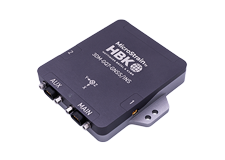 MicroStrain's new "lossless" wireless communication protocol (patent pending) supports scalable networks of high speed sensor nodes without data loss due to temporary radio frequency (RF) fading, multipath, or interference.
MicroStrain's new "lossless" wireless communication protocol (patent pending) supports scalable networks of high speed sensor nodes without data loss due to temporary radio frequency (RF) fading, multipath, or interference.
MicroStrain’s users have previously enjoyed a typical RF packet success rate of 99% - not bad. But now, with MicroStrain’s new LXRS™ “lossless” protocol, wireless sensor networks can deliver 100% reliable data throughput under most operating conditions.
Our new LXRS™ Wireless Sensing System (microstrain.com/what-is-LXRS?) includes:
• Lossless wireless communication protocol providing 100% packet success rate
• Extended Range radio link to 2 kilometers
• Scalable wireless sensor networks supporting continuous, burst, and hybrid sampling modes
• Time Synchronized to +/- 32 microseconds
The LXRS™ Wireless Sensing System works by leveraging an advanced bi-directional radio communication protocol. When data are received without errors by the WSDA base station, the WSDA sends an acknowledgement that these packets were received. Data that are not acknowledged remain within each LXRS sensor node’s non-volatile memory for scheduled re-transmission without reducing the overall system bandwidth.
Each wireless node in the network has its own precision timekeeper and maintains time synchronization to within +/- 32 microseconds. Data are time-stamped by each node at the time of analog-to-digital (A/D) conversion. Therefore, even when re-transmitted, all data are accurately time stamped and aggregated into a master file using time as a unifying variable.
This enables highly reliable data collection from scalable networks of wireless strain, acceleration, torque, force, temperature, etc. to be collected without loss of information. This is particularly useful when working in harsh operating environments, when the system may be subject to periodic RF interference, and when the experiment or test is very difficult to set-up or very expensive to replicate.










